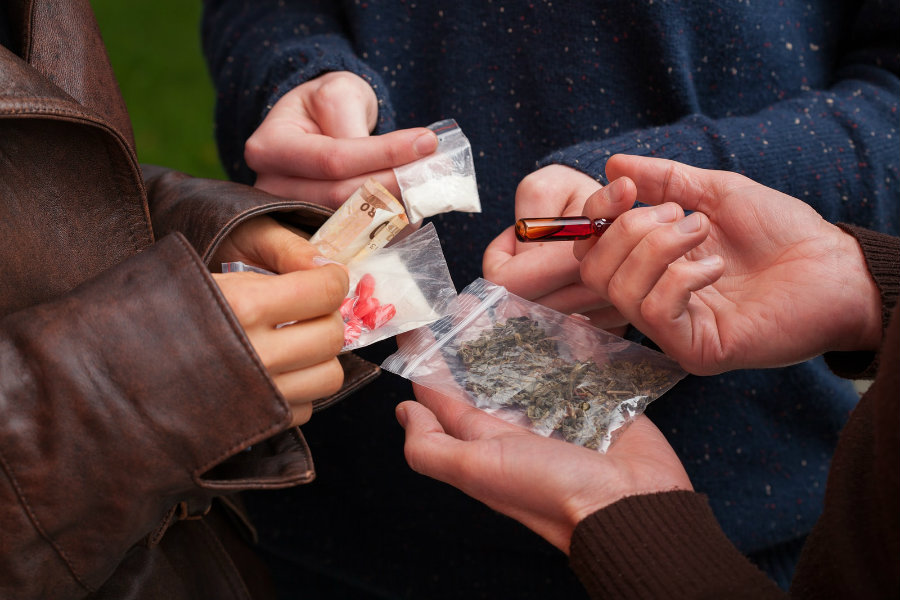After the United States public health crisis regarding overdoses involving opioids and benzodiazepines, the FDA has made broad changes to drug labeling Wednesday. Informing patients and health providers against the dangers of mixing opioids and tranquilizers, which contain benzodiazepines, could avoid the high number of deaths caused by taking both drugs.
Most people ignore consuming drugs with opiates and medicines with benzodiazepines at the same time can provoke coma or death. This ignorance is part of the current opioid abuse epidemic in the United States.

The U.S. Food and Drug Administration posted a press release on its official website announcing drugs containing opioids and those containing benzodiazepines will require a boxed warning. These warnings are guides for prescriptions with information about the risks associated with using opioids analgesics, opioid-containing cough products, and benzodiazepines at the same time.
Boxed warnings are the FDA’s strongest warnings, and they will be used in nearly 400 products that include opioids or benzodiazepines. Mixing both drugs can cause extreme sleepiness, respiratory depression, coma, and death.
Before deciding to use box warnings, the FDA made a research on the matter and discovered that physicians had been increasingly prescribing opioids and benzodiazepines together. The number of patients who were prescribed both drugs increased by 41 percent between 2002 and 2014, which means that more than 2.5 million opioid analgesic patients also received benzodiazepines. The mix of both drugs has been associated with adverse outcomes and a significant number of overdoses.
The FDA concluded that from 2004 to 2011 the rate of visits to the emergency room involving a nonmedical use of both drug classes increased. But most important, visits to the ER regarding overdose death from taking prescribed or greater than prescribed doses involving opioids and benzodiazepines nearly tripled during that period.
Baltimore City Health Commissioner Dr. Lena Wen said on Wednesday that health officials have noticed in recent years that one in three unintentional overdose deaths from prescription opioids also involved benzodiazepines.
How opioids and benzodiazepines work and how they have killed thousands of Americans in the past two decades
The FDA explains opioid analgesics are powerful painkillers that include prescription oxycodone, hydrocodone, and morphine, among other drugs. Both generics and branded names. Benzodiazepines are drugs found in medicines for the treatment of neurological and psychological conditions, such as anxiety, insomnia and seizure disorders.
Both drug classes depress the central nervous system, and they had similar labels, despite each has unique pharmacology, safety risks and labeling information to its use. This is why the FDA is changing labels and requiring opioid analgesics, prescription opioid cough drugs, and benzodiazepines to have different labels to avoid people using both at the same time thinking they are the same.
Additionally, The FDA issued a Drug Safety Communication, which provides information to anyone who is taking, or who knows someone is taking opioids or benzodiazepines. The purpose is that people can spread the message about mixing both drugs and help to reduce overdose cases regarding the irresponsible use of these drug classes. The Communication also targets health care providers to make them more careful to prescribe both drugs as directed, without increasing the dose or dosing frequency for either drug.
The FDA reports that opioid analgesic misuse and abuse have increased significantly in the United States over the past two decades, and it is now a major public health concern because overdoses lead to coma and death.
Opioids create addiction and dependence and are the leading cause of the current drug crisis. Opioids are similar to morphine and heroin, and it is used in OxyContin, Vicodin, and Percocet. Still, opioids are a necessary treatment for patients in pain or those who try to treat their addiction. The FDA continues to examine evidence regarding the use of benzodiazepines and opioids as part of patients medication-assisted therapy treatment (MAT), to determine benefit/risk considerations.
The FDA new measures to improved opioid and benzodiazepine warnings are consistent with clinical guidelines from the U.S. Centers for Disease Control and Prevention (CDC).
Would changing labels be enough to control the opioids crisis?
According to the NBC, the FDA has been heavily criticized for not acting quickly nor doing something effective to stop overuse and abuse of opioids. The dependence provoked by opioid over prescriptions have created a new and an attractive market for illegal drugs. New Jersey is one of the most affected states in the U.S.
Heroin addicts frequently overdose in Camden and dealers play with formulas and mix components that depress people’s respiratory system or worse. On August 29 Camden reported 29 cases of overdoses related to a new heroin labeled with a Batman logo.

Unfortunately, the heroin wave that came after the increase of painkillers prescriptions has affected the entire country and new illegal drugs like the one with the Batman logo or another heroin called “Game of Thrones” are the beginning of a new threat to the United States.
Opioid overdoses killed more than 47 thousand people in 2014, and the CDC estimates that in 2013 1.9 million Americans abused or were dependent on prescription opioid pain medications.
Due to the imminent health crisis, the White House launched in March an initiative to control the opioid addiction epidemic. And the CDC issued new voluntary guidelines in May urging doctors to avoid prescribing opioids if it was not strictly necessary.
Source: FDA
